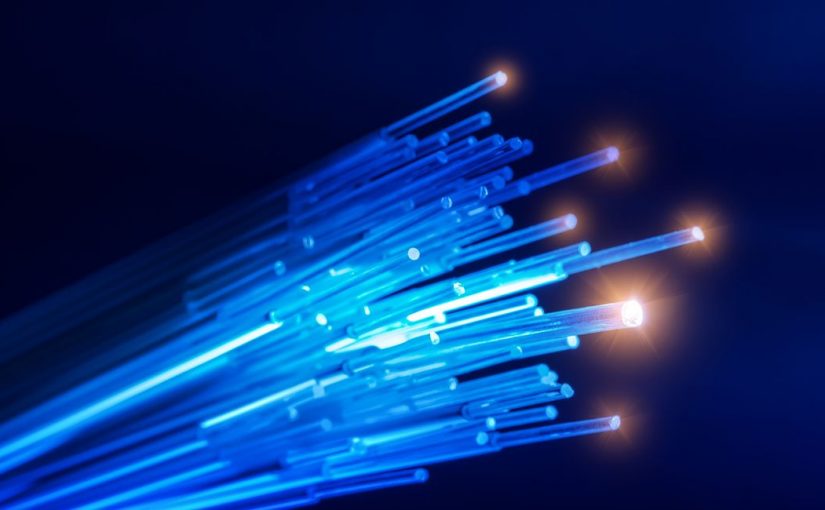Fiber Optics refers to the use of transparent, flexible silica-based wires to help transmit information over long distances while incurring minimal losses in data, ensuring higher success speeds and transfer with more bandwidth.
The principle of fiber optics has been there since the early 19th century. In the early 1840s, Daniel Colladon and Jacques Babinet showed that light can pass through small hairlike wires using the principle of reflection. The first revolutionizing discovery was made by Harold Hopkins and Narinder Singh Kapany at Imperial College, London, in 1953, where they were able to successfully transmit images over a spindle consisting of over 10,000 fibers over a distance of 75 cm. The first working model of transmission of data through fiber optical wires was made by German physicist Manfred Borner in 1965. Thus, Narinder Singh Kapany is rightly termed as the father of fiber optics.
Optical fibers consist of an interior material called core, which is surrounded by a material of a lighter refractive index called cladding. When the light strikes this core-cladding interface, due to the phenomenon of Total Internal Reflection, the light reflects and returns into the fiber. This process of transmission using fiber optics has some very big advantages. These are the reasons why optical fibers are widely preferred as modes to transfer data-
- Using optical fibers instead of traditional copper wires provides more bandwidth to the data.
- Fiber optics ensure that the data is transmitted at 31% higher speed than it does in a copper wire.
- Longer distances and better reliability and the two other important benefits.
- It is also important to note that using optical fibers means that a very minimum amount of data has been lost.
- Most importantly, optical fibers are cheaper than the traditional wiring system.
Just like any object available in the universe, using Optical fiber as a mode of communication also has its own pitfalls. They are-
- Optical fibers work on the principle of Total Internal Reflection and thus manufacturing of these fibers are tougher than traditional wires.
- Installation of optical fibers needs to be done by experts and isn’t possible by any laymen.
- Most importantly, these fibers cannot be curved. Bending of these fibers will cause higher losses in data and may even result in total data loss.
Even though optical fiber communication has certain defects, it is used widely in the Internet industry. Optical fibers are used to provide a wired internet connection to most of the cities in the U.S.
Fiber to the home or FTTH is a program where the American government is targeting at least 75% coverage of the entire country with fibers. Newer inventions in the field of fiber technology, which has resulted in introduction of the connection using Verizon FiOS and Google Fiber, have accelerated the spread of fiber optics throughout the U.S. In a recent survey done by “Broadband now”, it was estimated that nearly 25% of the total population of the United States used fiber optics to connect to the Internet. It was estimated that by December 2020, the figures would reach around 45%.
Arizona is one of the most populous states of the US. It also has a staggering 88% of the total population with wired internet service. It is important to note that although 88% of the population of Arizona use cables for the Internet, only 4.4% of the total population has access to Optical fiber service. CenturyLink, Cox and XInfinity are the largest providers of optical fiber communication in Arizona. These three internet giants provide speeds up to 50-60 Mbps using traditional DSL and cables, but they charge highly exaggerated rates for the installation of Optical fibers in the state of Arizona. It is also important to note that although these 3 giants cover about 27% of the total population using the internet, there are other companies that provide internet connections too. There are a total of 176 internet providers in the state of Arizona, while only three of them provide Fiber service.
Thus we can conclude that availing high-speed internet service isn’t a big issue in the state of Arizona, but Optical fibers are quite rare in the state. This can also be understood by the fact that there exist cities in Arizona with Broadband coverage as low as 0.8% to 0.0%. Out of the 176 network providers, more than three quarters provide a highly inferior quality of internet with broadband speeds maxing up to 1-2 Mbps.
Arizona is currently being deprived of the Optical Fiber service. To boost up the process of modernizing the current internet, people need to be aware of the availability of Optical Fiber Communication. Arizona State University in Tempe conducted a small survey which showed that over 25% of the Tempe population didn’t know of the availability of Fiber Optic communication in the state of Arizona. To help with these, more ways of communicating with people have to found out. It is also important to cut down on the exorbitant prices charged for Optical fiber communication. Only then can Arizona hope to attain the position of Internet supremacy.
